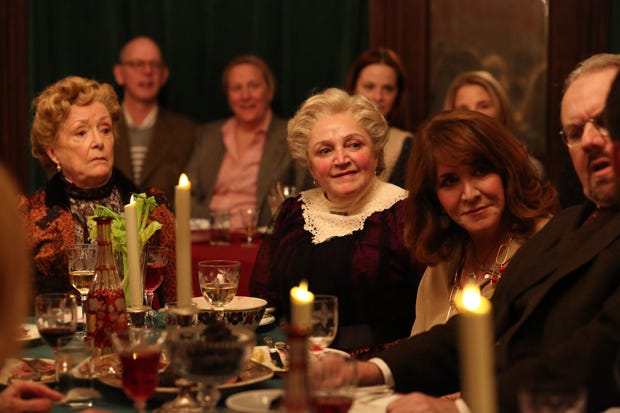Patricia Kilgarriff and Patti Perkins as the hostess aunts in the original 2016 performance of The Dead 1904, an immersive theatrical adaptation of Joyce’s story by the poet Paul Muldoon and Jean Hanff Korelitz at the American Irish Historical Society.
The novelist E.M. Forster once wrote that food in fiction is “mainly social,” and what he meant is that characters “hunger [only] for each other” and don’t need to eat on the page. Maybe so, but writers of fiction are not likely to serve their characters just anything. Food in novels is a way of characterizing: what characters eat and drink can say quite a lot—not just about them, but about the writer who serves them. “The Dead,” a story many consider James Joyce’s best, a tale that is the finishing touch of his collection, Dubliners, lays a Christmas feast on the table whose lengthy description entices and repels for reasons not entirely clear. The items in this feed are given a rollicking, rhythmic, and exacting treatment. The fact that the food and drink take center stage in so short a narrative might strike a reader as rather odd; and yet, oddly, it warms up a story where we know nothing good can happen.
Keep reading with a 7-day free trial
Subscribe to Book Post to keep reading this post and get 7 days of free access to the full post archives.



